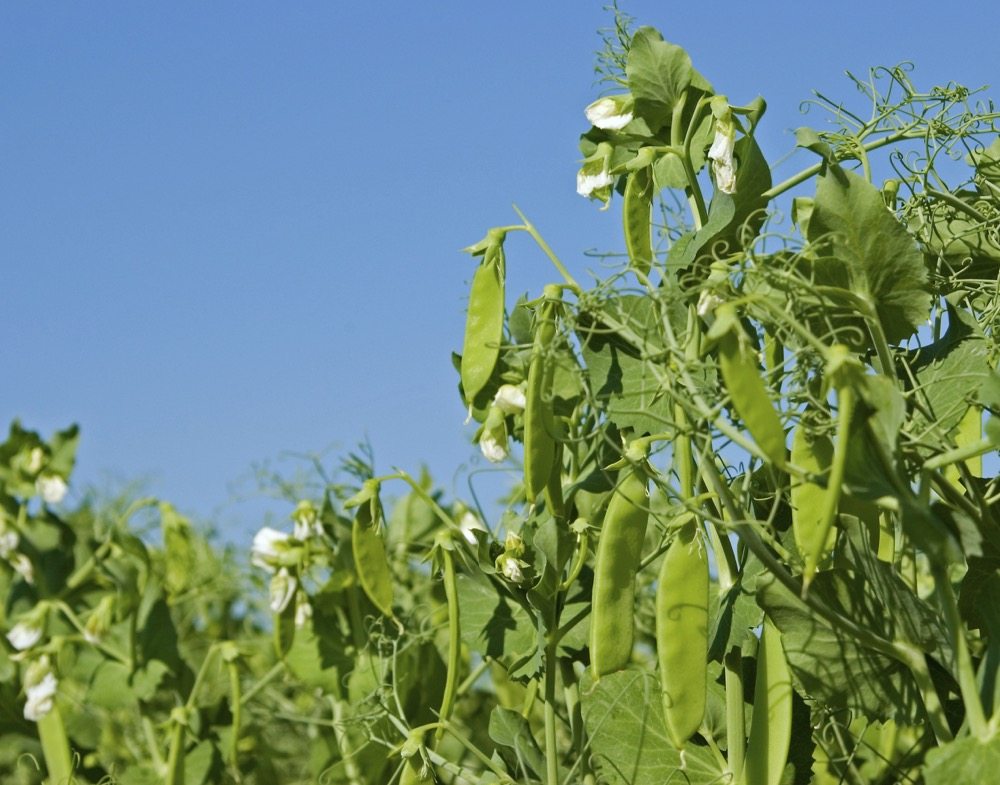No, it’s not the wild lupin, the blue-flowered plant that’s a common sight in roadside ditches, particularly in the Maritimes — it’s inedible to livestock and humans.
Rather, it’s the sweet white lupin and the blue lupin, and they have impressive credentials — high protein (35 to 38 per cent), 30 per cent dietary fibre, the capacity to fix more nitrogen than field pea and a natural resistance to aphanomyces, a root rot common to field pea and lentils.
Traditionally, blue lupin was used primarily as livestock feed, although it’s now being produced as a food product in Australia and the European Union. In Canada, the sweet white lupin has caught the attention of researchers across the country. It was first researched at the University of Guelph in 1995 and was tested in Alberta in 2007.
Read Also

Producers aren’t panicking over tariffs and trade threats
The influence of tariff and trade uncertainity on farm business decisions.
Among its drawbacks is a lack of drought tolerance — the 2007 Alberta trials saw a significant drop in yield without sufficient moisture and its maturity is 110 to 130 days, a challenge for some areas.
But some see the prospect of producing, processing and marketing sweet lupin for food and feed across the country. The protein component can be processed into flour, protein powder and isolates, with a product list of prototypes that includes lupin milk, gluten- and dairy-free ice cream, high-protein pasta and functional baking flour.
In December 2021, Protein Industries Canada announced a funding initiative of $7.3 million to “establish an integrated ecosystem to increase production and processing of lupin.” One of the four businesses named in the release is Calgary-based Lupin Platform Inc. (LPI).

For Tristan Choi, production, processing and demand dovetail as part of the same process, since it’s not enough for farmers to grow the crop. Demand must attract processors and consumers, and help drive acreage from a current goal of 45,000 to as much as 100,000. LPI is also evaluating the industrial application for sweet lupin, including potential uses for root and stem residues and oil in an attempt to make this a “zero-waste” crop.
“We’re getting the composition analysis for the roots and stems to see what kind of fibre it’s made of,” says Choi, chief executive officer of Lupin Platform. “Is there any of the oil that can be extracted for pharmaceutical or clinical use? Is there a type of fibre that can create a micro-bioplastic?”
Bright future… if
Choi wants to provide a contract-based, closed-loop production and processing value chain for sweet lupin.
“As we grow the acreage, we increase production and we increase consumption and usage of this rare food formulation,” says Choi. “Lupin is a niche product but there has to be very good interest from farmers and consumers.”
In building his business, he’s learned that the adage: “if you build it, they will come” no longer applies in agriculture. Instead, Choi has altered the company’s outlook to create awareness of its products and enhance that with a positive message to share, not just with consumers but with farmers as well.
“There’s a great education piece and we can approach the farmers and tell them there’s a benefit,” he says. “On the consumer side, a healthier diet has become important and lupin contains one-third protein and one-third dietary fibre, with low carbohydrate levels. It’s also an optimal choice to reduce cardiovascular diseases and promote healthy weight management. This also means less processing is needed to turn it into a healthy food ingredient.”
Consumers have been latching on to improved personal health through changes in diet, with many opting for plant-based proteins, a trend that Choi believes can only help further the benefits of lupin. Eighty to 90 per cent of the plant-based protein market is dominated by soybeans and peas, with the remainder composed of chickpea, fababeans and other specialty crops like lupin.
“But that smaller percentage is growing because consumers are looking for newer, ‘cleaner’ products that can diversify plant protein choices,” he says.

Go east!
Lupin production is also being tested in the Maritimes, in the hopes that growers can find an alternative to soybean production or as a rotational crop. Aaron Mills, a research scientist at Agriculture and Agri-Food Canada’s Harrington Research Station near Charlottetown, P.E.I., says lupin was grown by a few Island farmers in the early to mid-2000s. The challenges then were maturity, dry-down in the fall and disease resistance, but Mills says the genetics and disease resistance have improved in the past 20 years and the consumer trend in plant-based proteins is helping spur more research.
Unfortunately, his sweet white lupin plots in 2022 succumbed to ascochyta blight which came in on a seed lot of an older variety and all but wiped out the trial. Despite that setback, Mills has completed the first of a three-year study on lupin’s viability, and he’s encouraged by its agronomics, particularly on Prince Edward Island.
“When you look at what lupins like, it’s light, sandy soils, temperate climate and decent rainfall,” he says, adding he’s also researching narrow-leafed blue lupin for livestock. “In most years, we have the rainfall and the light, sandy soils, so it seems to be a good fit for us. This year, we didn’t have to spray a harvest aid like Reglone to hasten the harvest, so it’s year-by-year learning more about the crop and when to make those decisions.”
Lupin parallels field pea in some ways, and Mills includes a field pea check along with two or three varieties of lupin to gauge how yields compare. He’s hoping his work — including the disease-management setback from this year — will help provide valuable insights to growers who might consider adding lupin to their rotations.
Like Choi, Mills acknowledges the need for market demand.
“A big part of the success for any of these crops is having that value chain behind it and having it sorted out,” says Mills, noting that he believes Lupin Platform is cognizant of that. “If there is a market, I’m convinced farmers could grow anything they want. But cropping diversity is declining everywhere and we shouldn’t be turning away any option that we get: it’s good to introduce that diversity into the system.”
















